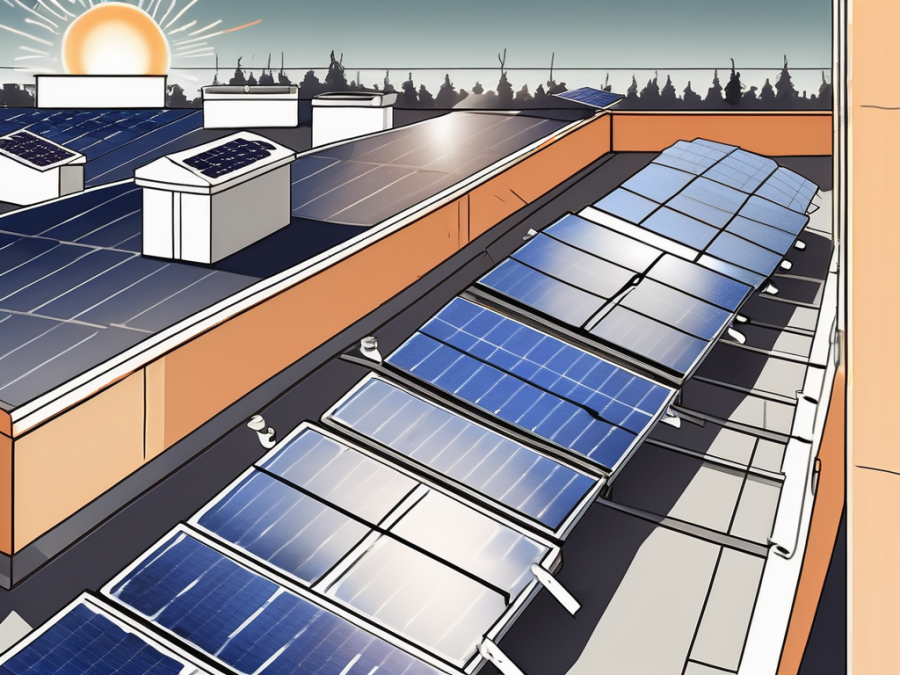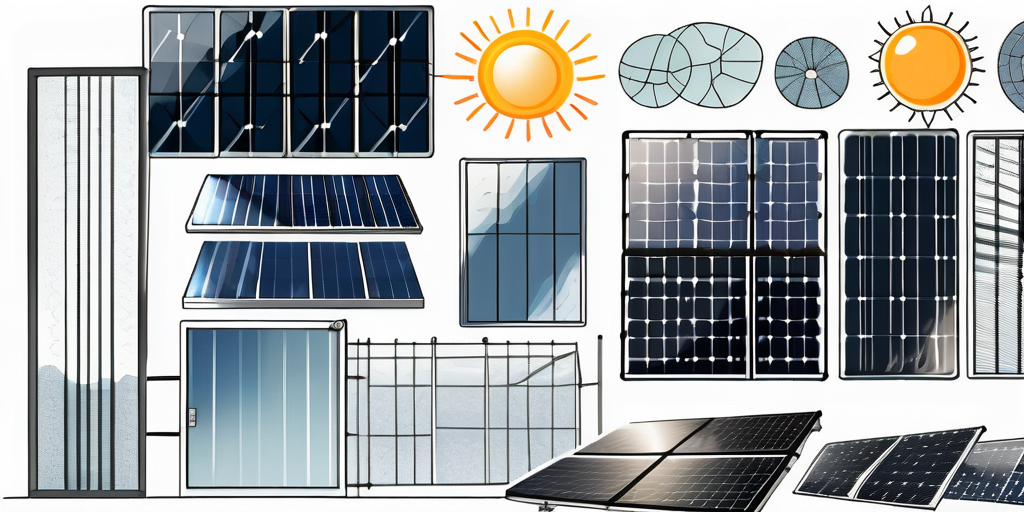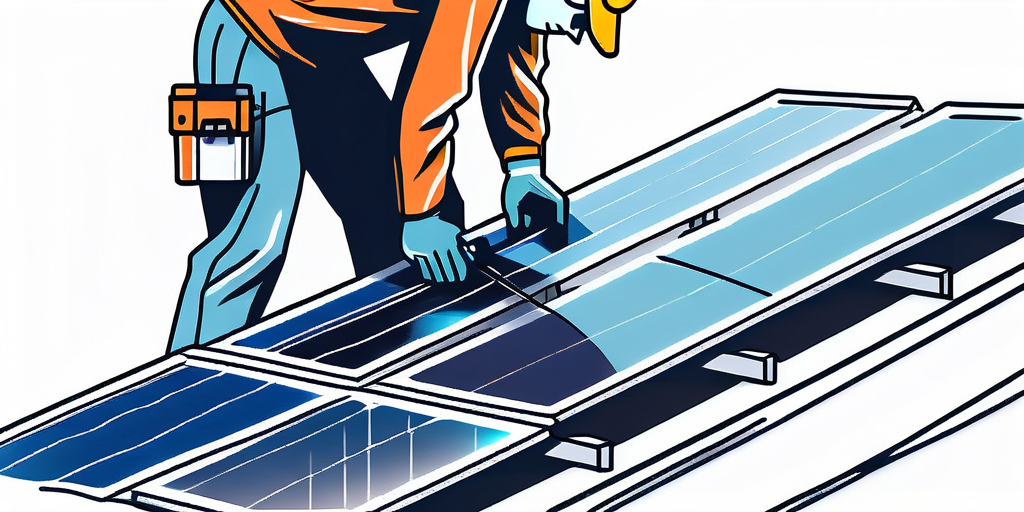
Solar energy is becoming increasingly popular as a renewable and sustainable source of power. Installing solar panels on your property can help you reduce your carbon footprint, save money on electricity bills, and even earn money through government incentives. In this ultimate guide, we will take you through everything you need to know about solar panel installation.
Understanding Solar Energy
The Basics of Solar Energy
Solar energy is derived from the sun’s rays and can be converted into usable electricity through the use of solar panels. These panels are typically made up of photovoltaic cells, which harness the sun’s energy and convert it into direct current (DC) electrical power.
Once the DC power is generated, an inverter is used to convert it into alternating current (AC) power, which is the type of electricity used in homes and businesses. This AC power can be used to power appliances, lighting, and other electrical devices.
But have you ever wondered how solar panels actually work? Let’s dive a little deeper into the science behind it. When sunlight hits the solar panels, the photovoltaic cells absorb the energy and release electrons. These electrons then flow through a circuit, creating an electric current. This current is what we harness and convert into usable electricity. It’s fascinating to think about how a single ray of sunlight can power our everyday lives!
Benefits of Solar Energy
There are numerous advantages to using solar energy as a power source. One of the main benefits is that solar energy is renewable, meaning it will never run out as long as the sun continues to shine. This is in stark contrast to fossil fuels, which are finite resources that will eventually be depleted. By harnessing the power of the sun, we can ensure a sustainable energy future for generations to come.
Additionally, solar energy production does not emit greenhouse gases, making it environmentally friendly and helping to combat climate change. The burning of fossil fuels, on the other hand, releases carbon dioxide and other pollutants into the atmosphere, contributing to global warming. By transitioning to solar energy, we can significantly reduce our carbon footprint and mitigate the harmful effects of climate change.
Furthermore, solar energy can save you money in the long run. By generating your own electricity, you can reduce or even eliminate your reliance on utility companies, resulting in lower monthly bills. In some cases, solar panel owners can even sell excess electricity back to the grid, earning them additional income. It’s a win-win situation for both your wallet and the environment!
Moreover, the installation of solar panels can increase the value of your property. Studies have shown that homes equipped with solar panels tend to sell at a higher price compared to those without. This is because potential buyers recognize the long-term cost savings and environmental benefits associated with solar energy. So not only are you reaping the financial rewards while you live in your home, but you’re also making a smart investment for the future.
Types of Solar Panels
When it comes to harnessing the power of the sun, there are several types of solar panels to choose from. Each type has its own unique characteristics and advantages. Let’s take a closer look at three popular options: monocrystalline solar panels, polycrystalline solar panels, and thin-film solar panels.

Monocrystalline Solar Panels
Monocrystalline solar panels are often considered the gold standard in the solar industry. These panels are made from a single crystal structure, usually silicon. The uniformity of the crystal structure allows for higher efficiency rates, meaning that monocrystalline panels can convert a larger percentage of sunlight into electricity. This efficiency advantage makes them an excellent choice for homeowners who have limited roof space or want to maximize their energy production.
In addition to their impressive performance, monocrystalline panels also have a sleek and uniform appearance. The single crystal structure gives them a smooth and black color, making them visually appealing for many homeowners. However, it’s important to note that this superior performance and aesthetic appeal often come at a higher price point compared to other types of solar panels.
Polycrystalline Solar Panels
Polycrystalline solar panels, also known as multicrystalline panels, are another popular choice for residential solar installations. These panels are made from multiple silicon crystals, which are fused together to form a single panel. The manufacturing process for polycrystalline panels is less complex than that of monocrystalline panels, resulting in a more affordable price tag.
While polycrystalline panels may be less efficient than their monocrystalline counterparts, they still offer a respectable level of performance. The multiple crystal structures give these panels a distinctive blueish hue, which some homeowners find less visually appealing. However, if cost is a significant factor in your decision-making process, polycrystalline panels can be an excellent choice without compromising on overall performance.
Thin-Film Solar Panels
If you’re looking for a solar panel option that offers flexibility and versatility, thin-film solar panels might be the answer. These panels are made from a thin semiconductor material, such as amorphous silicon or cadmium telluride. The thin-film technology allows for lightweight and flexible panels that can be installed in various locations, including curved surfaces or non-traditional mounting systems.
However, it’s important to consider that thin-film panels typically have lower efficiency rates compared to crystalline panels. This means that you may need a larger installation area to achieve the same power output. Despite this drawback, thin-film panels can be an excellent choice for specific applications, such as portable solar chargers or solar-powered gadgets.
As you can see, there are several types of solar panels to choose from, each with its own set of advantages and considerations. Whether you prioritize efficiency, affordability, or flexibility, there is a solar panel option that can meet your unique needs and help you harness the power of the sun.
Pre-Installation Considerations
Evaluating Your Energy Needs
Before embarking on the exciting journey of installing solar panels, it is crucial to assess your energy needs with utmost care and consideration. Simply put, you need to have a clear understanding of how much electricity you currently consume. To achieve this, take a deep dive into the abyss of your past electricity bills, examining them with the meticulousness of an archeologist unearthing ancient artifacts. By doing so, you will gain valuable insights into your energy consumption patterns and be better equipped to make informed decisions about your solar panel installation.

However, it is not enough to merely dwell on the present. The future beckons, and with it comes the possibility of electric vehicles gracing your driveway or the expansion of your property. These potential changes must be taken into account when evaluating your energy needs. After all, you wouldn’t want to find yourself in a situation where your solar panel system falls short of meeting your future demands, leaving you yearning for more kilowatt-hours.
Assessing Your Property’s Solar Potential
Alas, not all properties are created equal when it comes to basking in the glory of solar panel installations. The sun, that celestial ball of fire, can be a fickle friend, casting shadows of doubt upon your solar dreams. Therefore, it is imperative to conduct a thorough solar site analysis to determine the solar potential of your property.
During this analysis, you must consider various factors that could potentially hinder the efficiency of your panels. Are there towering buildings that cast their ominous shadows upon your roof? Do majestic trees sway in the wind, obstructing the sun’s rays from reaching your panels? These are the questions that must be answered, for they hold the key to unlocking the full potential of your solar installation.
Furthermore, the orientation and angle of your roof play a vital role in harnessing the sun’s energy. A roof facing south, like a sunflower following the sun’s path, is often considered ideal. However, do not despair if your roof faces a different direction, for there are ways to optimize its solar potential. With the right knowledge and expertise, your solar dreams can still be realized, even if your roof is not perfectly aligned with the sun’s trajectory.
Understanding Solar Panel Costs and Savings
Ah, the age-old question: how much will it cost? Solar panel systems, like all things in life, come with upfront costs. However, fear not, for these costs can be outweighed by the promise of long-term savings that will make your wallet sing with joy.
Before diving headfirst into the world of solar panel installations, it is wise to research the average costs in your area. Equip yourself with knowledge about the equipment, installation, and permitting fees that may be involved. By doing so, you will be armed with the power of information, allowing you to make sound financial decisions.
But wait, there’s more! The sun, in its infinite generosity, often bestows upon us government incentives, such as tax credits or rebates, that can further alleviate the financial burden of your installation. These incentives, like rays of sunshine breaking through the clouds, can make your solar dreams more attainable than ever before.
So, my friend, as you embark on this solar-powered adventure, remember to evaluate your energy needs, assess your property’s solar potential, and understand the costs and savings that await you. With these considerations in mind, you will be well-prepared to harness the sun’s energy and embark on a greener, more sustainable future.
The Installation Process
Choosing a Solar Panel Installer
When selecting a solar panel installer, it is crucial to do your research. Look for experienced and reputable companies with a track record of successful installations. Request quotes from multiple installers and compare their offerings, warranties, and customer reviews before making a decision.

Preparing Your Home for Installation
Prior to the installation, your home may require some preparations. Clear any obstacles from the roof, ensure sufficient roof space for the panels, and make any necessary structural modifications to accommodate the added weight. Your installer will guide you through the specific requirements for your property.
The Step-by-Step Installation Process
- 1. Permitting and paperwork: The installer will handle the necessary paperwork, permits, and approvals required for the installation, ensuring compliance with local regulations.
- 2. Roof preparation: The installer will prepare the roof surface, which may involve removing existing roofing materials or installing mounts to secure the solar panels.
- 3. Panel installation: The solar panels are carefully mounted onto the prepared roof, ensuring proper alignment and securing them in place.
- 4. Electrical connections: The installer will connect the panels to the electrical system according to local electrical codes, including the installation of inverters, wiring, and electrical panels.
- 5. Inspection and testing: Once the installation is complete, a professional inspector will ensure that the system meets safety and quality standards. The installer will also conduct tests to verify the functionality and performance of the solar panels.
With the installation process complete, you can now enjoy the benefits of solar energy. Monitor your system’s performance regularly, clean the solar panels as needed, and consult with your installer for any maintenance or warranty-related concerns. By harnessing the power of the sun, you are not only reducing your impact on the environment but also taking control of your energy future.
